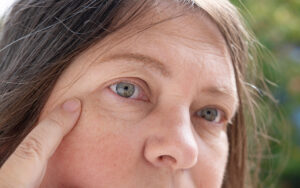8 Eye Health Problems That Albinism Can Cause
Albinism is a genetic disorder impacting melanin production, affecting about 1 in 17,000 people worldwide. It causes the skin, hair, and eyes to lack pigmentation. People with albinism are at an elevated risk of developing eye disorders because of their genetic condition and the environment. They lack melanin, which helps protect the eyes from sun damage.
Are you living with albinism and want to learn more about your eye health? This article is for you.
What is Albinism?
Albinism is a disorder that occurs due to a genetic mutation that affects melanin production in the body. It results in little or no pigment in the skin, hair, and eyes. Though researchers believe albinism is inherited, they are yet to establish its exact cause.
Eye Health Problems Associated with Albinism
These include:
Reduced Visual Acuity
This condition reduces the eye’s focus on objects at a distance. Although it’s a common symptom of other eye diseases, it typically affects people with albinism. It’s because the retina is underdeveloped in people with albinism.
The retina converts light into electrical signals sent to the brain. The eye’s lens also loses its ability to change its focus, thus being unable to focus on far objects.
Eyeglasses or contact lenses can address the issue.
Photophobia
The condition makes your eyes more sensitive to light, making it difficult to see well in bright environments, such as in a sunny or well-lit room. It occurs when the retina experiences excessive stimulation, leading to blurred vision and discomfort.
Symptoms include squinting, headaches, or tearing up when exposed to bright light sources such as sunlight or fluorescent lights. Photophobia causes discomfort when reading and watching TV, making driving difficult on sunny days.
Nystagmus
This disorder causes the eyes to move involuntarily and uncontrollably. The lack of pigment in your irises makes it difficult for light to enter the eye and stimulate the photoreceptors. The brain sends signals for your eyes to move back and forth to find some light or focus on an object nearby.
Nystagmus also presents with other eye disorders like crossed eyes or cataracts. Further, it can cause double vision, making reading, watching television, or driving hard.
Crossed Eyes
It’s also known as strabismus. It’s a condition where the eyes are not aligned with each other. People with albinism are more prone to strabismus due to the lack of melanin in the eye muscles. Symptoms include headaches and double vision.
You can correct it with glasses or contact lenses. If these methods don’t work, you can undergo surgery to realign your eyes permanently. Some people are born with it, but it typically affects older people.
Lazy Eye
Lazy eye or amblyopia is an eye disorder that causes vision to be impaired in one eye. It’s common in children with albinism and can arise from different factors, including an imbalance in the muscles that position the eyes. Amblyopia develops when the brain lacks proper connections between the eyes.
It happens due to poor vision in one eye if you don’t correct it with glasses or contacts when you’re young. If you have amblyopia, your brain may learn to ignore the affected eye as it thinks it is dysfunctional. It leads to a loss of depth perception and other visual problems, making it hard for people with this condition to function normally without assistance.
Astigmatism
It’s a disorder where the cornea, the eye’s clear front surface, is irregularly shaped, causing blurred vision due to uneven light refraction. The lack of melanin in the eye can cause the cornea to be thinner and more prone to astigmatism.
Astigmatism can cause difficulty reading and seeing distant objects.
Reduced Depth Perception
The ability to see in three dimensions is called stereoscopic vision, a skill that most people are born with. It allows you to gauge how far or close an object is and helps you avoid bumping into things or running into other people.
If you have albinism, it’s harder to judge distances accurately, thus having trouble knowing when you’re about to walk out into traffic or trip over something.
Corrective lenses, such as glasses or contact lenses, can help you to manage reduced depth perception.
Increased Risk of Eye Diseases
People with albinism are at an increased risk for eye diseases like glaucoma, cataracts, macular degeneration, and retinal detachment.
Glaucoma occurs when the fluid in the eye doesn’t drain well, causing increased pressure in the eye. The pressure can damage the optic nerve, which is responsible for transmitting visual information from the eye to the brain. People with albinism are more prone to glaucoma due to underdeveloped eye structures and the lack of pigmentation in the eye.
Cataracts occur when the eyes lens becomes cloudy, leading to blurred vision and other visual problems.
People with albinism should go for regular eye exams and work with their eye care professionals to manage the eye disorders associated with the condition. It includes using eye drops to reduce intraocular pressure or undergoing surgery to remove cataracts or repair the retinal detachment.
Work with a Professional to Manage Eye Health-Related Problems
With proper care, people with albinism can lead happy and healthy lives. So. if you have albinism or a loved one with the condition, it’s vital to partner with a professional. They can help you manage your condition and prevent complications.
With the help of an eye care professional, you can receive personalized treatment plans and expert advice on protecting your eyes from harm. You can enjoy better vision and overall health by attending regular eye exams, genetic counseling, and other specialized services.
So, if you’re experiencing any eye-related problems that associate with albinism or want to ensure your eyes remain healthy, don’t hesitate to seek the help of a professional. With their expertise and support, you can enjoy clear vision and optimal eye health for years.





